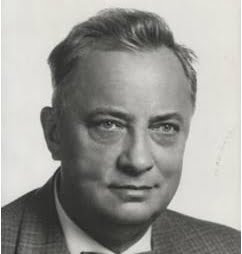Károly Csébfalvi
He first worked as a mathematician at the Mining Planning Institute (Bányaterv); here in 1958 he developed an analog model for solving transportation problems. In 1959 he received a scholarship to Germany (Karlsruhe), where he studied the then new results of computer technology.
In 1962, the first computing center equipped with a (then modern, transistorized) Western computer, the National-Elliott 803/B, was established at the Ministry of Heavy Industry (NIM) on his initiative and under his leadership. He recruited young, energetic colleagues. Under his leadership, the Computing Center of the NIM Institute of Industrial Economics and Operations Management (NIM IGÜSZI) became one of the founding cradles of Hungarian computing.
He worked at the Electric Power Industry Research Institute (VEIKI), the Hungarian Electricity Works (MVM), the Central Statistical Office (KSH), and finally at Apor Vilmos College.
His interests were universal: music research, linguistics, imaging, speech synthesis, and anthropology all appeared in his environment, pioneering in a way that was ahead of its time. His ideas resulted in many theses, scientific degrees, and economic benefits.
He was constantly looking for new and innovative computer applications. This activity was recognized in 1998 by the NJSZT Kalmár Award, which is awarded for outstanding work in novel applications of computer technology.
- In the 1960s, when everyone could only be called a comrade, he introduced the address “uncle” or “auntie” in the computer center of the Ministry of Heavy Industry, used without indicating rank, and attached to the first name. (The older ones still refer to him as “Uncle Károly”.)
- The first Hungarian member of the International Guild of Knot Tyers. ( The Message of Knots – Mathematician Károly Csébfalvi– Kontraszt Web and Video Studio.)
Created: 2016.06.25. 20:16
Last modified: 2025.05.13. 18:21

